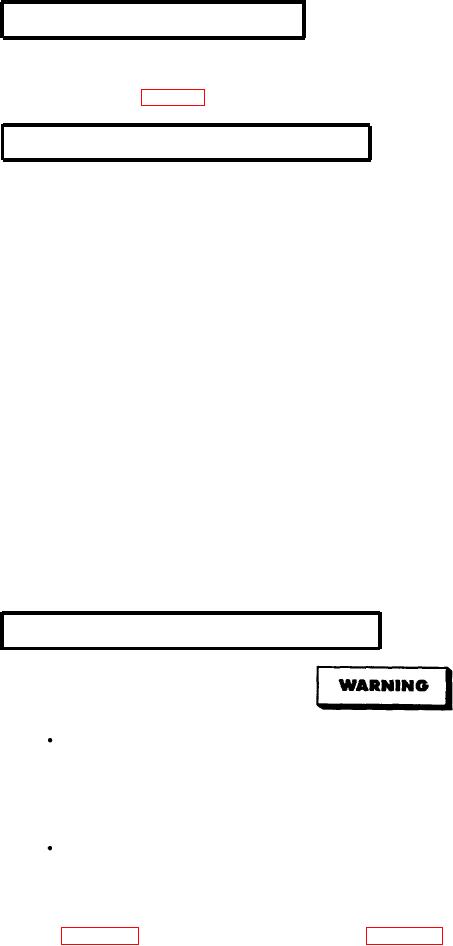
TM 5-3895-369-14
4-18. OPERATIONAL CHECKS.
All operational checks included in the maintenance procedures shall include the techniques and methods required to
assure the satisfactory performance of the vehicle. Reference the operator's instructions for starting, run-up, and
shutdown procedures (para 2-9).
4-19. INSPECTION OF COMPONENTS.
a. Clean all parts before inspection. Examine bearings for rusted or pitted rollers, balls, races, or separator.
Examine balls and races for abrasion and/or serious discoloration. The following are conditions for bearing rejection:
(1) Cuts or grooves parallel to ball or roller rotation.
NOTE
Nicks and gouges outside race load areas are not cause for rejection unless deep enough to cause bearing
binding or misalignment.
(2) Fatigue pits (as opposed to minor machine marks or scratches).
(3) Cracks or serious discoloration.
b. Check all hose surfaces for broken or frayed fabric and breaks caused by sharp kinks or chafing against other
parts of the unit. Inspect metal tubing lines for kinks. Inspect fitting threads for damage. Replace any defective part.
Check for leaks after assembly and during initial operation period.
c. Visually inspect all castings and weldments for cracks.
d. Inspect all wiring for chafed or burned insulation. Inspect all connectors for loose connections and broken
parts.
e. Inspect gears and splines for cracks, pitting, and discoloration.
4-20. UNIT CLEANING PROCEDURES.
Drycleaning solvent (P-D-680) is TOXIC and flammable. Wear protective goggles and gloves; use
only in a well-ventilated area; avoid contact with skin, eyes, and clothes and do not breathe vapors.
Keep away from heat of flame. Never smoke when using solvent; the flash point for type I
drycleaning solvent is 100F (38C) and for type II is 140F (60C). Failure to do so may result in
injury or death to personnel.
If personnel become dizzy while using cleaning solvent, immediately get fresh air and medical help.
If solvent contacts skin or clothes, flush with cold water. If solvent contacts eyes, immediately flush
eyes with water and get immediate medical attention.
a When cleaning ball or roller bearings, place in a basket and suspend in a container of drycleaning solvent,
(item 54, appendix E). If necessary, use a brush (item 6, appendix E) to remove caked grease or chips. Avoid rotating
bearings before solid particles are removed to prevent damaging races and balls.
4-155

